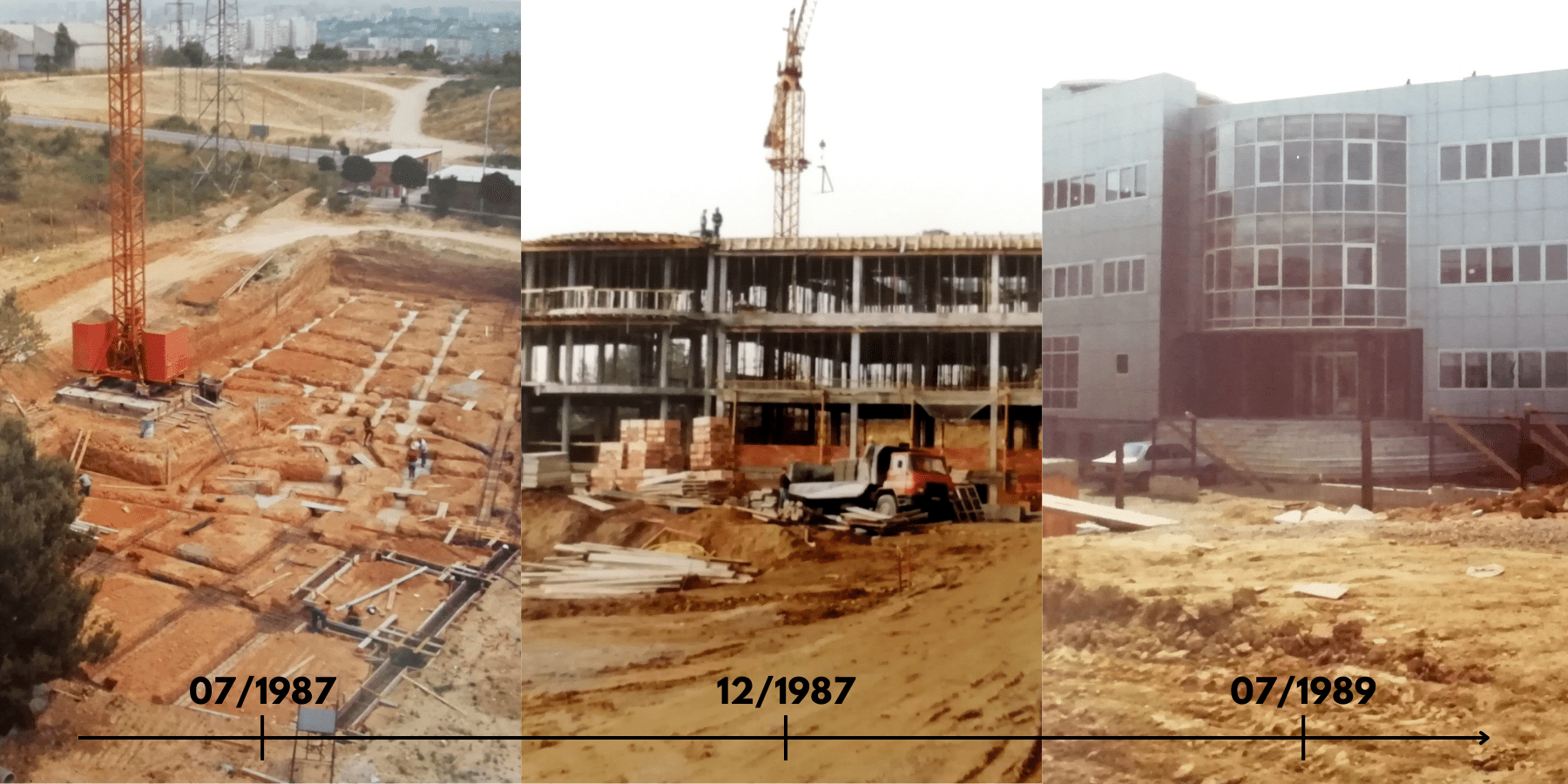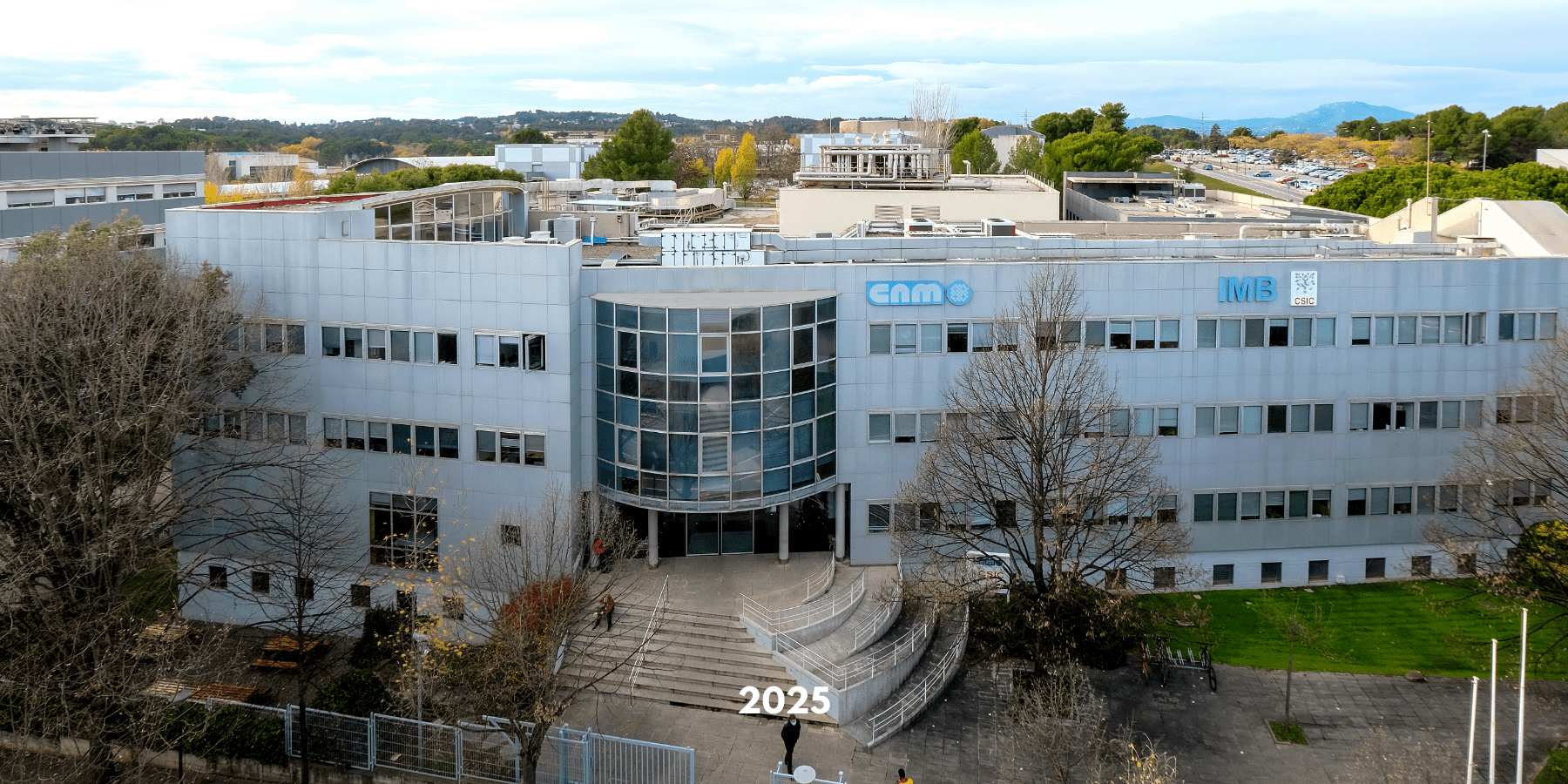IMB-CNM: 40 years driving the future of technology through public research
On 24 January 1985, the creation of the National Microelectronics Centre (CNM) was approved, authorised by the Minister of Education and Science at the proposal of the President of the CSIC. Today we are celebrating 40 years of technological excellence at the service of society, with the CNM at its Barcelona headquarters (IMB-CNM) being a prominent player at European level with participation in two new European pilot lines and two JU chip competence centers.

The National Microelectronics Center (CNM) leads the development of pioneering technologies in micro and nanoelectronics in Spain since its creation in 1985. Throughout 40 years, the CNM has been a benchmark in research and knowledge transfer, contributing to the advancement of key sectors such as information technologies, consumer electronics or the environment. Today, the center celebrates its anniversary with its sights set on the technological challenges of the future and with the commitment to continue innovating at the service of society.
Within the framework of the National Electronic and Informatics Plan, on February 2, 1985, an Order approved on January 24 was published in the Official State Gazette (BOE) for the creation del CNM as a center of the Spanish National Research Council (CSIC). The Government Plan consisted of a strategy to strengthen the advance of microelectronics in Spain and to promote research and development in the area. It was a time when there were already companies involved in semiconductor manufacturing, such as FAGOR Electrónica or Piher Semiconductores, and when the leading American telecommunications company AT&T announced the installation of an integrated circuit (chip) production plant in Madrid.
The CNM headquarters in Barcelona was the first CSIC center to be located on the Campus of the Universitat Autònoma de Barcelona (UAB) and paved the way for seven more to be added over time, creating a very high level scientific and technological pole.
The CNM was born with dual headquarters in Barcelona and Madrid. Years later, it was joined by a new node in Seville. All of them belonged to the CSIC and, in the case of Seville, as a joint center with the University of Seville. With this reorganization, the names were updated to Instituto de Microelectrónica de Barcelona (IMB-CNM), Instituto de Microelectrónica de Sevilla (IMSE-CNM) and Instituto de Microelectrónica de Madrid (currently Instituto de Micro y Nanotecnología, IMN-CNM).
Scientific leadership and technological innovation
The IMB-CNM aims to continue leading the advance in technologies that the European Commission considers key and enabling technologies in the coming decades. It is the Spanish center with the largest participation in the European initiatives of the Chips Joint Undertaking JU that is managing the implementation of the new Chips Act. It is the only one involved in two European Pilot Lines: one dedicated to heterogeneous integration and advanced encapsulation and the other to the realization of advanced photonic circuits. It also participates in two Competence Centers, which will facilitate the access of Spanish companies from all sectors to any advanced technology in micro and nanoelectronics or integrated photonics available in Europe.
The IMB-CNM was also recently recognized as a María de Maeztu Unit of Excellence by the State Research Agency, thanks to its top-level international scientific impact.
Research over the last forty years has focused on microelectronics, but has also evolved into nanotechnology, photonics and quantum. IMB-CNM specializes in the design and fabrication of microelectronic technologies applied to fields such as energy, environment, health and the frontiers of physics. Among its developments are Organ-on-a-chip devices, intracellular chips, gas and electrochemical sensors, energy generators, photonic circuits and power devices, as well as the design of integrated circuits.
The global scope of its research is reflected in collaborations with entities such as the European Space Agency, such as the integration of silicon carbide diodes in the BepiColombo mission to Mercury, and CERN, with the creation of a new sub-detector for the ATLAS experiment.
In addition, the institute is an engine of innovation with the creation of more than ten spin-offs that have brought the laboratory's advances to society, contributing to technological progress.
In the staff of the early years, there were some scientists who were pioneers of microelectronics in Spain. The history of the CNM is written with the work of many people, although three names stand out in the start-up of the institution: Francesc Serra i Mestres (1940), Emilio Lora-Tamayo D'Ocón (1950-2024) and Zenón Navarro Garriga (1947-2007).
A history with its own names
The CNM's chip design and fabrication research activities at its Barcelona headquarters began in 1985, in provisional facilities in the clean room at the UAB Faculty of Science. The construction of the institute's definitive building on the UAB Campus was completed in 1989 and the construction of the Micro and Nanofabrication Clean Room in 1991. With an initial surface area of 900 square meters dedicated to the manufacture of semiconductor devices, the investment to start it up was almost 2,000 million pesetas. It became one of the most flexible research rooms in Europe and is still today the largest and most equipped of its kind in Spain, thanks to an extension carried out in 2009. The White Room has held the distinction of Large Scientific Facility (GIC) since the 1990s, which is currently known as a Unique Science and Technology Infrastructure (ICTS), granted by the Ministry of Science, Innovation and Universities.
In the staff of the early years, there were some scientists who were pioneers of microelectronics in Spain. The history of the CNM is written with the work of many people, although three names stand out in the start-up of the institution: Francesc Serra i Mestres (1940), Emilio Lora-Tamayo D'Ocón (1950-2024) and Zenón Navarro Garriga (1947-2007).
Serra i Mestres, director for twenty years until 2006, was the first director of the Sala Blanca and the first director of the Escola d'Enginyeria de la UAB. He is professor emeritus of the same university and member of the Reial Acadèmia de Ciències i Arts de Barcelona (RACAB). He was awarded the Narcís Monturiol Medal for scientific and technological merit by the Generalitat de Catalunya in 1989, the Fundació Catalana per a la Recerca Award in 1998 and named Officier dans l'Ordre des Palmes Académiques République Française in 1997.
Lora-Tamayo D'Ocón, who died in 2024, was scientific director and vice-director during the Serra i Mestres era and, later, director of the IMB-CNM, a position he left to become president of the CSIC for the second time in 2012. D. in Physics and specialized in microelectronics technology, prior to the CNM he was at the CSIC's Torres Quevedo Institute of Communications Electronics in Madrid. He was also a member of the RACAB and the Real Academia San Dionisio de Ciencias, Artes y Letras de Jerez de la Frontera. In recent years, he was rector of the Menéndez Pelayo International University and, later, of the Camilo José Cela University.
Navarro Garriga was a physicist and a key person during the construction and installation of the two clean rooms, the first at the UAB and the final one at its current location.
However, the honor of being the first director is held by Joan Peracaula Roura, professor emeritus of the UPC, who held the position from the foundation until 1987. Peracaula was also director of the UPC's Escola Tècnica Superior d'Enginyeria Industrial de Barcelona (ETSEIB-UPC) from 1987 to 1991.





